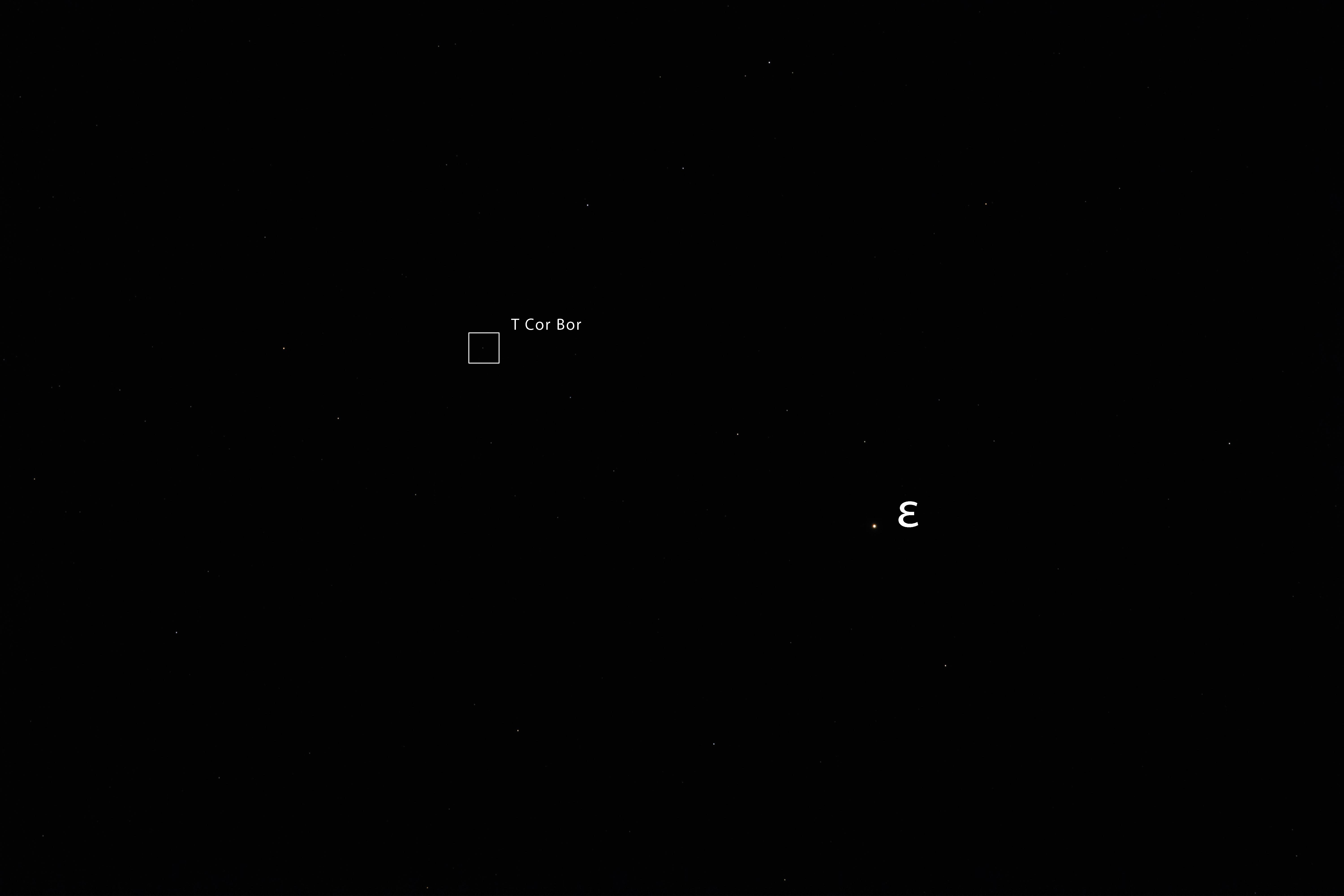Home › Forums › RAC Main Forum › General Discussion › Blaze Star
- This topic has 2 replies, 2 voices, and was last updated 5 months, 2 weeks ago by
 fealeybob14.
fealeybob14.
-
AuthorPosts
-
July 21, 2024 at 1:33 am #14867
After a few nights of observation and imaging, I think I’ve settled on a camera setting to image the Blaze Star, T Cor Bor. The issue isn’t getting a good image of the star as it is, the issue is getting a good image of the star that isn’t saturated or adulterated after it blows. For that reason I need to save room in the exposure gamut of the camera to allow for the brightness that it’s going to undergo throughout the process.
For that reason, this image is much dimmer than what I posted before. This allows me to be able to show the light curve between now and through its explosive process.
In this image Epsilon Coronae Borealis is the brightest star at magnitude 4. When I checked that star it mostly remained in the gamut except at its very core where it reached saturation. T Bor Cor will theoretically only reach magnitude 2. If that holds true then T Cor Bor should fall short of saturation (hopefully).
Saturation is bad because you can’t quantify the intensity once you reach that point. If this were a stereo that had a dial that went from 1 to 10, you could tell me what number the volume is at when the volume stays within that range. But if the volume gets louder than 10 you can’t tell me what it is because the dial only goes to 10. That’s what saturation is with light intensity. You can’t measure intensity past full white. From here on out I will expose at this setting and then I can evaluate the intensity throughout the process (hopefully).
I am using a Canon EOS R50; with a RF100-400mm F5.6-8 IS USM lens; at 400.00 mm; with settings 20.0 sec; f/25; ISO 1600.
I stacked 15 images to reduce noise but performed no additional processing past that. This is a raw image except for saving as JPG which I did so that I could upload it here. You may not be able to see the star in the image shown, but if you download the file I attached you should be able to zoom in and see it. The second image is labeled.
 July 25, 2024 at 12:17 am #14871
July 25, 2024 at 12:17 am #14871The Blaze Star is probably going to saturate on my camera… I’m going to keep working it out and see if I can figure out how to get the whole light curve. I don’t think my camera can get the whole 8 magnitudes in the same exposure setting. It will be interesting. I’m glad it hasn’t blown yet.
August 2, 2024 at 3:41 pm #14878Looks like you are prepared for the spectacle Duane! Looking at magnitude data of T CrB from AAVSO today, shows an unusual fluctuation in brightness https://apps.aavso.org/webobs/results/?star=000-BBW-825&num_results=200
Not sure of the meaning of this, but wouldn’t it be great if tonight was the night and we were observing at Eagle Bluff!
Perhaps the differences relate to the observers and filters used?
-
This reply was modified 5 months, 2 weeks ago by
 fealeybob14.
fealeybob14.
-
This reply was modified 5 months, 2 weeks ago by
-
AuthorPosts
- You must be logged in to reply to this topic.


